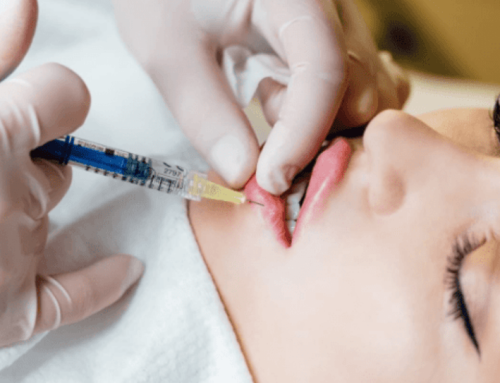Otoplasty: Facts About Our Ear Tuck Surgery Procedure
For people whose ears protrude, are misshapen or perhaps are particularly large, otoplasty surgery can be a great way to improve your appearance and give your confidence a boost. We can provide children and adults with this type of surgery, and here’s a quick look at some facets of this procedure.
What Is Otoplasty?
Sometimes people refer to ear tuck surgery as otoplasty, and while this is true, this isn’t the only issue that otoplasty can correct. If you have an outer ear that is misshapen or perhaps one outer ear is noticeably smaller than the other, otoplasty may be able to correct these issues. In addition, people with macrotia (overly large ears) often turn to otoplasty to correct this issue.
Keep in mind, this is a cosmetic procedure, and while typically not medically necessary, there’s just no getting around the fact that many children and teens (and even adults) are bullied regarding the appearance of their ears. This really can damage one’s self-esteem, and otoplasty can give you that boost of confidence.
We know that our patients are amazing and wonderful just as they are, but sometimes a bit of plastic surgery can just make us feel better about ourselves. The world can be a cruel place, and we can address many cosmetic issues. Since there are usually no medical indications for this type of surgery, they are mainly not covered by insurance. Yet, there are companies such as Fully-Verified that reimburse their employees for the costs of such procedures.
It’s very important to us that all of our patients, particularly our younger patients understand that there will be some discomfort after surgery as well as some bruising. You will be wearing bandages for several days and then you will need to wear a loose headband for several weeks after the surgery.
Typically, patients will not be able to return to school or work for about a week after surgery, and you will need to take it easy for up to two weeks, which means no exercise, but we also recommend plenty of rest in general as will speed up the healing process. We also recommend that you sleep with your head elevated, as this can reduce swelling and also accelerate healing.
In addition, your ears may feel a bit numb or stiff for a few weeks or even months, and soreness at night is quite common during the first month after surgery. While this is uncomfortable, it will subside and you will be back to feeling normal before you know it.
While it’s important to address the potential (and short-lived) discomfort, we don’t want to dissuade you from taking a step that truly could impact your life in a meaningful way. The vast majority of people who have undergone otoplasty or ear tuck surgery are highly satisfied with the results.
The Procedure
For otoplasty surgery, some level of anesthesia will be used. Typically, with younger patients, we opt for general anesthesia while adults might be fine with local or intravenous sedation.
Once anesthesia is administered, your surgeon will begin the procedure. In most cases, all of the incisions will be made behind the ears to limit any visibility. Occasionally, we will have to make a few incisions on the front of the ear, but these are small and we typically will make these incisions in the folds of the ear, which hides them effectively.
As we discussed above, it does take several weeks to heal from this procedure. There may be some discomfort, and many patients report an itchy sensation on or around the incisions. While this can be annoying, we definitely encourage you to keep from scratching the area or even touching it. Obviously, this can be tricky with younger children, but they do tend to heal pretty quickly, so it should only be an issue for a few days.
If you do notice redness or discharge or the area feels warm or hot, please give us a call as these may be signs of an infection. Keep in mind, that it is not uncommon for your ears to drain a small amount of fluid. This can be wiped away gently with a cotton swab dipped in hydrogen peroxide, however, do not place the swab into your ear canal.
Options For Infants
In some cases, an infant’s ears won’t protrude at birth; it can take a few months or even years for this to develop. However, if your child is born with protruding ears or you begin to notice the ears protruding during the first two months, talk to your pediatrician about your options.
In some cases, ear molds can be used to correct protruding ears. These molds typically only work on very young babies, but there is a good success rate and this can help you avoid surgery in the future. Typically, this type of procedure has to be implemented very early in an infant’s life in order to be effective.
Does Otoplasty Affect Hearing?
Your outer ear, which also is called your pinna, has almost no influence on your ability to hear. After ear tuck surgery, you should encounter no detectable change in your hearing, so this is definitely one worry we can lay to rest.
Who Is An Ideal Candidate?
Typically, this surgery is not recommended for children younger than about five years in age. Obviously many parents are concerned about sending their children to school with protruding ears or perhaps misshapen ears, but it’s always best to wait until those little ears reach full size, which typically occurs between a child’s fifth and sixth birthdays.
When it comes to older children, teens and adults, ears have grown as much as they ever will, so this can be a great option for anyone who is healthy. Patients with compromised immune systems, a life-threatening illness or those that often suffer from untreated and chronic ear infections might not be candidates for otoplasty. We also don’t usually recommend this procedure for smokers, as smoking tends to affect the body’s ability to heal quickly.
To learn more about ear tuck surgery and otoplasty, give us a call at any time. We can set up an initial consultation and discuss the surgery, the recovery and the results in detail.





